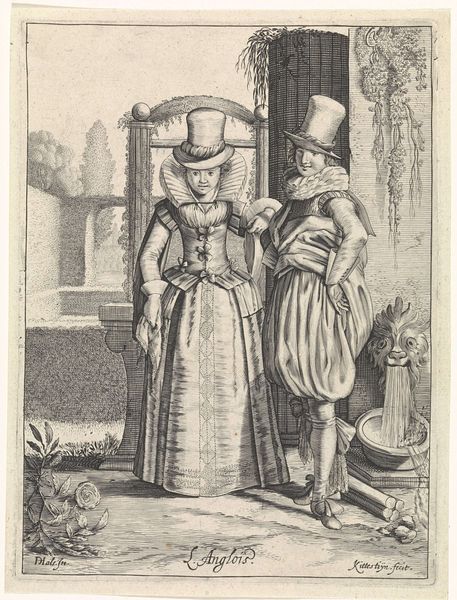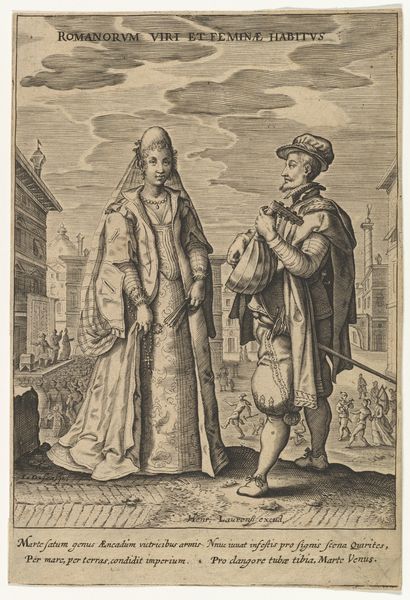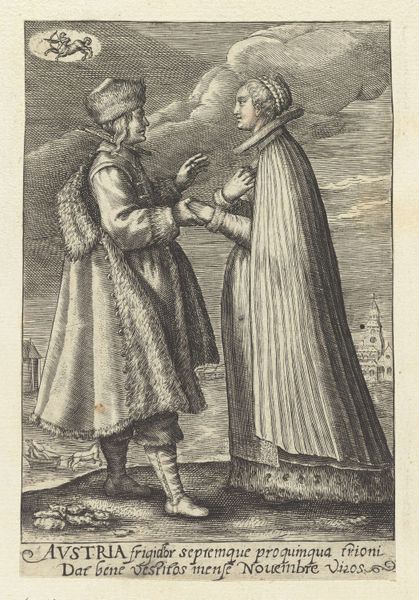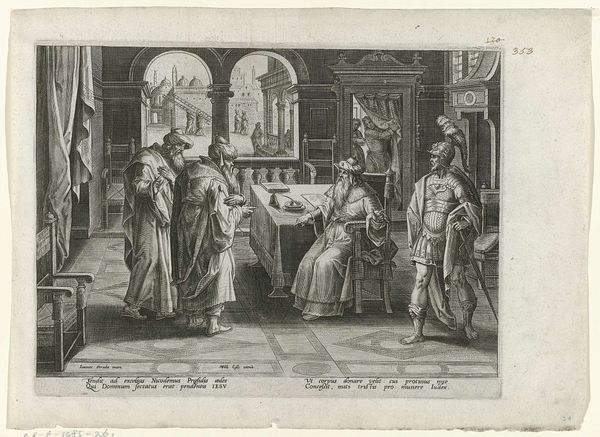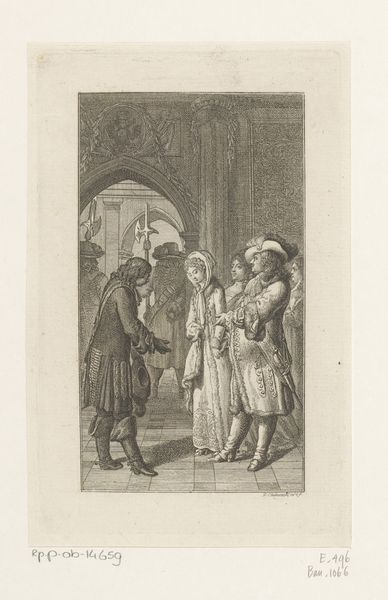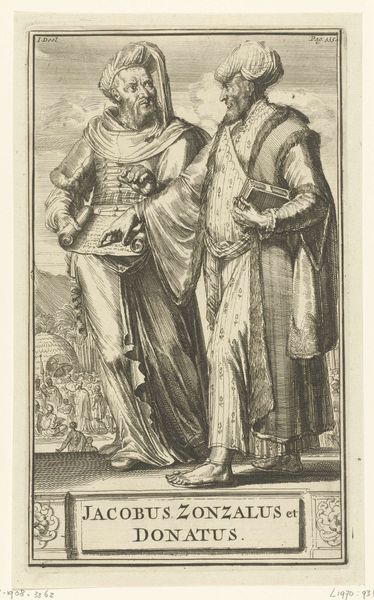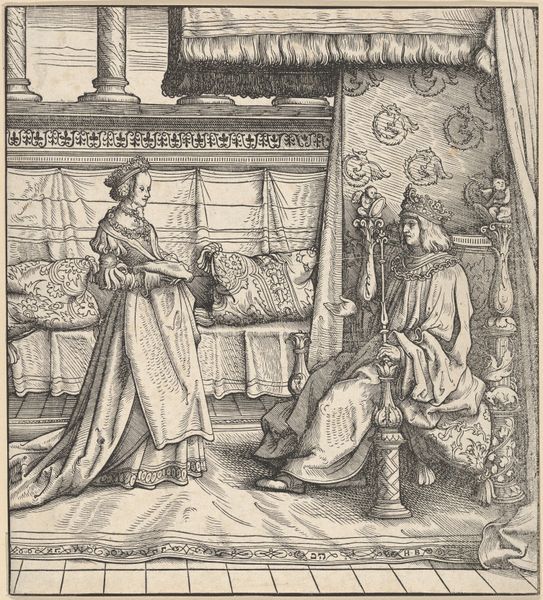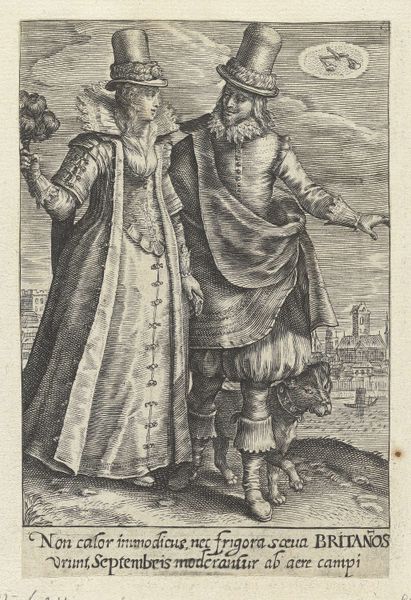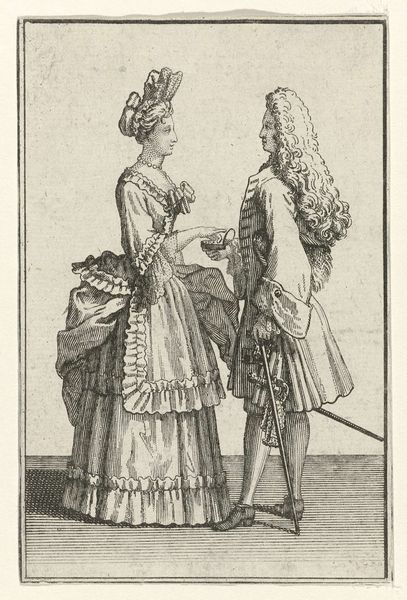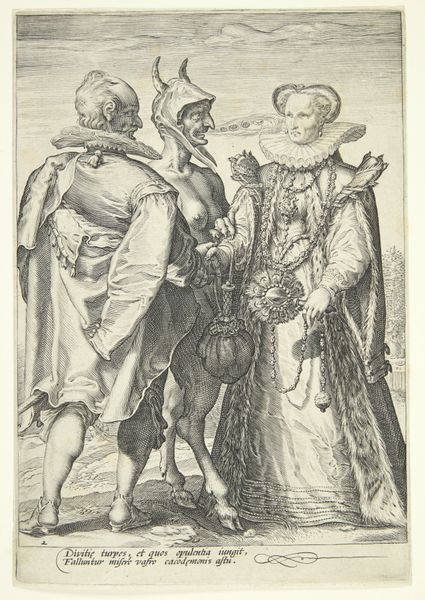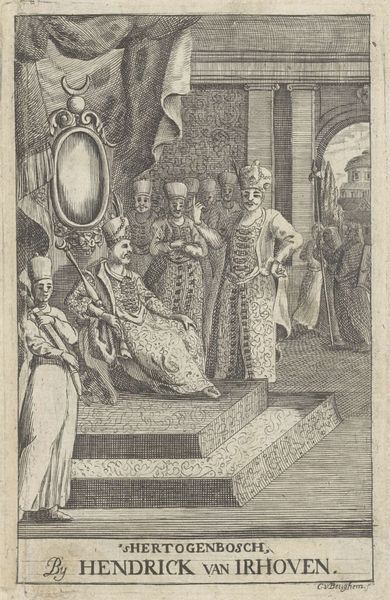
drawing, print, etching, engraving
#
portrait
#
drawing
#
baroque
#
dutch-golden-age
# print
#
etching
#
landscape
#
figuration
#
line
#
genre-painting
#
history-painting
#
dress
#
engraving
Dimensions: height 206 mm, width 150 mm
Copyright: Rijks Museum: Open Domain
Editor: This is "Elegant paar in Italiaanse kleding," or "Elegant Couple in Italian Clothing," an etching and engraving by Cornelis van Kittensteyn, dating from 1610 to 1638. I'm immediately struck by the details in their clothing and how posed they appear. What can you tell me about it? Curator: Well, let's unpack this a bit. The "Italian Clothing" is, ironically, a Dutch fantasy of Italian fashion. It speaks to the fascination, and even fetishization, of other cultures that was emerging at the time. Consider this through the lens of colonialism; how does the depiction of 'foreignness' contribute to a power dynamic? Editor: That's a really interesting point. I hadn't thought about it like that. So it's not necessarily about accuracy, but about constructing a narrative? Curator: Precisely. The print also speaks to the rise of a merchant class in the Netherlands. Notice the elaborate outfits— clothing became a signifier of wealth and social standing. How does this image reinforce or subvert those ideas, considering it’s presented as "Italian?" Editor: It's like they're putting on a performance, and maybe Kittensteyn is commenting on the performative nature of identity itself. I’d originally just considered their clothes fancy, but it sounds like those "Italian" clothes have a lot more to say. Curator: Exactly! Think about how these images circulated. They shaped perceptions, often reinforcing stereotypes or constructing entirely new, imagined realities. Understanding that context is crucial to seeing beyond the surface-level elegance. It is a great commentary on Dutch perception of class and race. Editor: I'm definitely going to look at art differently now. I'll be considering power structures and colonial undertones alongside aesthetics. Thanks! Curator: It is truly how we can start to see art in the broader societal context of creation.
Comments
No comments
Be the first to comment and join the conversation on the ultimate creative platform.

